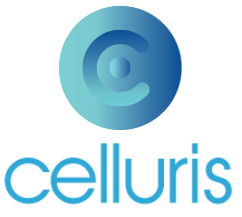After the success of CAR-T therapies in hematological cancers, science is advancing with various studies to apply this treatment model to solid cancers. Recent research shows the evolution of immunotherapy use in malignant brain tumors, for instance.
According to a recent study published in scientific journals, high-grade gliomas (HGG) are among the most deadly malignant tumors of the central nervous system (CNS) in pediatrics. Despite aggressive multimodal treatment—including surgical resection, radiotherapy, and chemotherapy—the long-term prognosis for patients remains bleak, with a five-year survival rate below 20%.
The increased understanding of the genetic and epigenetic characteristics of pediatric brain tumors has revealed important differences from adult gliomas, which need to be considered to identify innovative and more effective therapeutic approaches.
Immunotherapy relies on different techniques aimed at redirecting the patient’s own immune system to specifically combat cancer cells. In particular, T lymphocytes can be genetically modified to express chimeric proteins, known as chimeric antigen receptors (CARs), with specificity for selected tumor-associated antigens (TAAs).
About immunotherapy in pediatric gliomas
The principle of cancer immunotherapy is based on using certain parts of the immune system to more specifically combat tumor cells. This goal can be achieved through a wide variety of approaches, and so far, the development of T cells expressing chimeric antigen receptors (CAR) is one of the latest advances in this field. Clinical trials using CAR T-cell immunotherapy approaches have shown positive results in patients, with tumor regression and increased survival.
Diffuse midline glioma (DMG) is a fatal pediatric cancer of the central nervous system (CNS). The location and infiltrative nature of DMG prevent surgical resection, and the benefits of palliative radiotherapy are temporary; the median overall survival (OS) is 9 to 11 months. The tumor immune microenvironment (TIME) presents a relatively ‘colder’ profile in terms of leukocyte infiltration, with a dominant immunosuppressive myeloid compartment, low levels of infiltrating lymphocytes, and pro-inflammatory molecules. As survival statistics have stagnated for many decades and therapies targeting the unique biology of DMG are urgently needed, this has led to the clinical evaluation of chimeric antigen receptor (CAR) T-cell therapies in this scenario. We highlight the current landscape of CAR T-cell therapy for DMG, the role TIME may play in response, and strategies to overcome treatment obstacles.
Research in pediatric brain tumors
According to studies, pediatric brain tumors have an immunologically cold TME with weak T-cell infiltration and poor immune surveillance. The secretion of immunosuppressive cytokines and the presence of immunosuppressive cells—such as tumor-associated macrophages/microglia (TAMs) and myeloid-derived suppressor cells (MDSCs)—limit the immune system’s effectiveness in eradicating tumor cells. Innovative immunotherapeutic strategies are needed to overcome these obstacles and improve T-cell capacity to eradicate the tumor.
Conventional therapies, radiation, and chemotherapy are not sufficient to achieve sustained disease remission in patients affected by brain tumors, in both adult and pediatric patients, and new therapeutic strategies are needed. Certainly, immunotherapy is a new therapeutic approach that harnesses the inherent activity of the immune system to control and eliminate malignant cells.
So far, CAR-T cell therapy has shown promise in early clinical trials in patients with brain tumors but has not achieved the same success seen in hematologic malignancies. According to studies, several obstacles, including the immunosuppressive TME, heterogeneity in target antigen expression, and difficulty accessing the tumor site, impair the antitumor efficacy of CAR-T cells. Several CAR-T antigenic targets have been considered so far, and recently, GD2 and B7-H3 appear very promising for pediatric tumors. However, the heterogeneity of expression is a limiting factor for single antigen-targeted CAR-T in solid tumors.
Next steps
According to published studies, researchers should consider innovative strategies such as next-generation CAR-T cells or combinatorial approaches with other immunotherapy agents and/or chemotherapy that could improve tumor control, leading to tumor mass reduction or eradication.
To this end, the “next generation” or multivalent CAR-T has been developed and may have a significant impact on the treatment of pediatric brain tumors, improving the effectiveness of T-cell therapies and overcoming the obstacles of the immunosuppressive tumor microenvironment.


